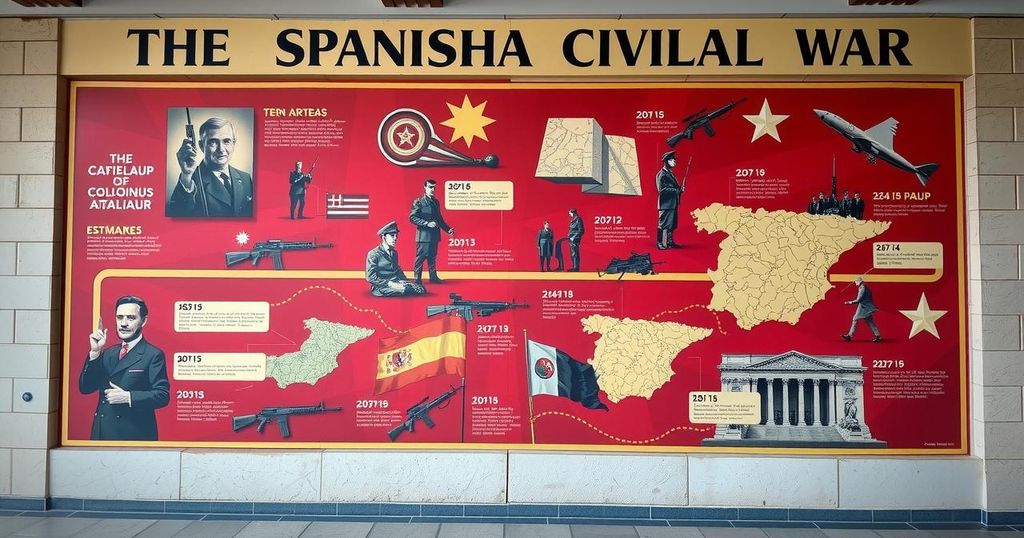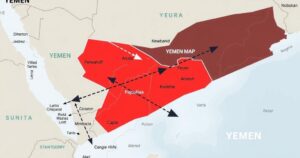Timeline of the Spanish Civil War

The Spanish Civil War started from a military coup in 1936 evolving into a significant conflict until its end in 1939. Key events include Alfonso XIII’s reign, the rise of military dictatorship, and the role of international volunteers, ultimately leading to Franco’s establishment of a lasting dictatorship after the war claimed countless lives.
The Spanish Civil War, ignited by a military coup attempt in 1936, spiraled into a devastating proxy conflict, ultimately claiming hundreds of thousands of lives by its conclusion in 1939. This timeline outlines pivotal moments in that tumultuous period.
On May 17, 1902, a sixteen-year-old Alfonso XIII ascends to the Spanish throne. His youthful exuberance for power leads him to frequently interfere in parliamentary matters, fostering extreme political instability. Over the course of two decades, Spain witnesses a staggering 33 government changes from 1902 to 1923.
Fast forward to July 22, 1921, when indigenous Berber forces led by Abd el-Krim decisively defeat the Spanish garrison at Annual in Morocco. This shocking rout marks perhaps the most significant defeat of a European colonial power at the hands of native forces since the Battle of Adwa and signifies the beginning of the Rif War.
On September 13, 1923, just before a report implicating Alfonso XIII in the Annual disaster, General Miguel Primo de Rivera stages a coup that dismantles the parliamentary government. Supported by Alfonso, he establishes a military dictatorship, ushering in an era of authoritarian rule.
The economic fallout of the global depression leads to Primo de Rivera’s resignation on January 28, 1930. Alfonso’s association with the dictatorship prompts a surge in Republican sentiment, culminating in a coalition of liberals and Republicans meeting on August 17, 1930, to plan the king’s ousting.
April 12, 1931, marks a critical turning point when Republican and Socialist candidates dominate municipal elections, leading to calls for Alfonso’s abdication. Faced with the threat of insurrection, he flees Spain just two days later as military support for him crumbles.
The Far-right Falange Española is established on October 29, 1933, by José Antonio Primo de Rivera, the former dictator’s son. This group, which seeks to dismantle the Republican government and draws inspiration from Italian fascism, struggles for relevance in its early years, relying on Italian financial backing to survive.
On February 16, 1936, the Popular Front—a left-wing coalition—gains a parliamentary majority under Manuel Azaña. Following their ascension, the political landscape becomes unruly with rampant strikes and violence against churches and political institutions, prompting Rightist military leaders to plot a coup.
July 17, 1936, sees a military revolt triggered by the assassination of far-right leader José Calvo Sotelo. An army uprising begins in Spanish Morocco, and the following day, Gen. Francisco Franco declares the rebellion commenced. Despite initial victories, the Nationalist forces struggle to take Madrid, leading to a full-scale civil war.
By October 14, 1936, the first International Brigades arrive to support Republicans in Spain. Over the next couple of years, about 60,000 foreign volunteers will rally behind the Republican cause, while Franco’s Nationalists receive backing from fascist governments in Italy and Nazi Germany, turning the conflict into a battleground for opposing ideologies in Europe.
On November 6, 1936, Nationalist forces approach Madrid but encounter fierce resistance, resulting in a prolonged siege of the city. Three weeks later, on November 20, 1936, Primo de Rivera is executed in prison and becomes a symbol for the Nationalist movement.
The Spanish Civil War encapsulated a significant chapter in history characterized by political strife, social upheaval, and the clash of ideologies. With key events spiking from the military coup in 1936 to the final fall of Madrid in 1939, the war signified not only a national tragedy for Spain but also a broader struggle between fascism and communism in Europe. Franco’s subsequent dictatorship shaped Spain for decades, leaving a lasting impact on its societal fabric and political landscape.
Original Source: www.britannica.com







